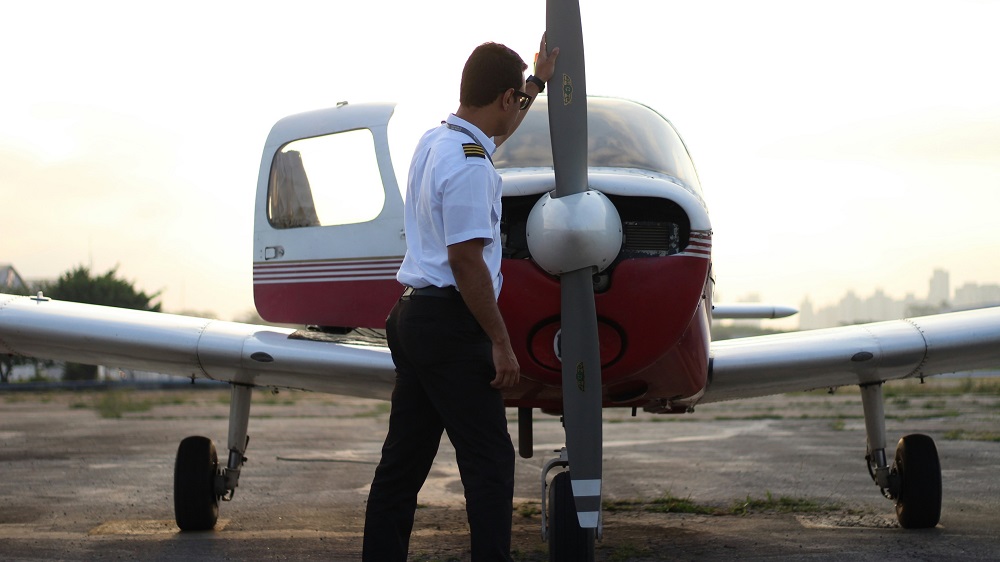Checkride day. Just hearing the phrase can make even the most well-prepared student pilot feel a little nervous. After months of studying, flying, and practicing maneuvers, it all comes down to one flight and one person. The Designated Pilot Examiner, or DPE. But here’s the good news: your DPE is not there to trick you. In fact, they want you to succeed. Your job is to show them that you are ready to safely exercise the privileges of a private pilot certificate.
The best way to make a good impression is not by being perfect. It is by being professional, prepared, and demonstrating good judgment. In this guide, we will walk through everything you can do to impress your examiner from the moment you shake their hand to the final landing.
Understand the DPE’s Role
Before we talk about what you should do, it helps to understand what the DPE is there to do. A Designated Pilot Examiner is an experienced pilot and flight instructor authorized by the FAA to conduct practical tests. They are following a specific set of standards called the Airman Certification Standards (ACS), which outline exactly what you must demonstrate to earn your certificate.
The DPE’s mission is to make sure you meet those standards. They are evaluating whether you are safe, competent, and ready to be trusted with a pilot certificate. That is it. They are not expecting perfection. They are looking for sound judgment, good decision-making, and safe handling of the aircraft.
First Impressions Matter
Your checkride begins the moment you meet your examiner, not when you start the engine. Here are a few simple ways to start on the right foot:
- Dress professionally. You do not need a uniform, but showing up clean, put-together, and prepared makes a strong impression.
- Be on time. Or better yet, be early. Rushing in late creates stress and does not set a professional tone.
- Be organized. Have all your documents ready to go. That includes your logbook, student pilot certificate, medical certificate, government-issued ID, knowledge test results, aircraft documents, and all endorsements.
- Greet them with confidence. A smile and a firm handshake go a long way. Let them know you are ready and looking forward to the day.
Prepare Like a Professional
One of the easiest ways to impress your DPE is to be thoroughly prepared. This means more than just knowing the ACS. It means showing that you have taken your training seriously and that you are ready to take full responsibility for the aircraft and the flight.
Here is how to prepare effectively:
Know the ACS
The Airman Certification Standards are your checkride roadmap. Every maneuver, knowledge topic, and skill you need to demonstrate is listed in the ACS. Study it carefully. Use it as a checklist to review with your instructor before checkride day. If the ACS says you need to demonstrate slow flight within certain tolerances, practice that maneuver until you can meet those standards consistently.
Review Your Weak Spots
Everyone has areas they are less confident in. Whether it is crosswind landings, navigation questions, or systems knowledge, identify your weak spots early and work on them. Being able to talk about your mistakes and how you learned from them can actually impress your DPE more than trying to hide them.
Preflight Prep
You will be expected to plan a cross-country flight as part of your oral exam. Come prepared with:
- A complete nav log
- Weather briefings
- Weight and balance calculations
- Performance numbers
- Fuel planning
- Alternate airport options
Show that you can think like a real-world pilot making real-world decisions.
The Oral Exam: Think Like a Pilot
The oral portion of the checkride is your chance to demonstrate how you think through problems and manage risk. This is not a memory quiz. Your examiner wants to hear your reasoning and how you apply your knowledge.
Answer Thoughtfully
If you do not know something, it is okay to say so and explain how you would find the answer. Better yet, use your resources. Pull out the FAR/AIM or your chart supplement and show how you would look up the information in a real-world situation.
Use Real-World Judgment
When asked about topics like weather minimums, alternates, or go/no-go decisions, do not just recite the regulations. Talk about what you would actually do. Include personal minimums, passenger considerations, and risk management strategies.
Be Honest and Confident
You do not need to bluff or act like a seasoned airline captain. Be honest about your experience, and be confident in what you do know. Examiners appreciate honesty and realism far more than rehearsed answers.
The Flight Test: Fly Like a Safe Pilot
Once the oral portion is complete and you move into the flight test, your job is to fly safely and stay within the ACS standards. The DPE is not looking for flawless airmanship. They are watching to see how you manage the flight and how you recover from small mistakes.
Brief Everything
Before each maneuver or phase of flight, brief the examiner just like you would brief a passenger. For example, before a steep turn, say, “Next we’ll do steep turns at 3,000 feet. I’ll roll into a 45-degree bank to the left and then to the right, maintaining altitude within 100 feet.” This shows that you know what is expected and helps set the stage for success.
Stay Ahead of the Airplane
Plan ahead and stay organized. Set up your radios early. Tune your frequencies before you need them. Make your checklists a part of your flow, not something you fumble with. Staying ahead of the airplane shows maturity and confidence.
Talk Through Your Actions
Explain what you are doing and why. This helps the examiner understand your thought process and decision-making. For example, say, “I’m choosing this runway because it aligns better with the winds, and I have more runway length available.” This kind of communication shows that you are thinking like a pilot in command.
Recover Like a Pro
If you make a mistake, do not panic. Recognize it, correct it safely, and move on. The ability to recognize and recover from an error is more valuable than doing everything perfectly the first time.
Show Respect for Safety
Every DPE is focused on safety, and you should be too. Here are a few ways to demonstrate that mindset:
- Do a thorough preflight inspection, not just a quick walkaround
- Use your checklist from memory only if appropriate, and always verify
- Brief your takeoff and emergency procedures
- Scan for traffic and use proper radio calls
- Maintain situational awareness and explain your decisions when things change
When the DPE sees that safety is part of everything you do, they know you are ready to fly on your own.
Common Mistakes to Avoid
Some things will not impress your examiner. Here are a few common missteps to avoid:
- Showing up late or unprepared
- Being overly casual or overconfident
- Trying to bluff your way through a knowledge gap
- Ignoring the checklist
- Arguing with the examiner
- Failing to correct mistakes or denying them
Stay humble, professional, and focused throughout the day.
Final Words of Advice
Your checkride is not a trap. It is an opportunity to prove that you are ready to take on the responsibility of being a certificated pilot. The DPE is not your enemy. They are your evaluator and, in many cases, your supporter. They want to see you succeed just as much as you do.
Prepare thoroughly, think like a pilot, and treat the day like a professional pilot would. Be ready, stay calm, and fly safely.
Impressing your DPE is not about being perfect. It is about showing that you are ready.
Sources:
– FAA: Airman Certification Standards (Private Pilot Airplane)
– FAA: Pilot’s Handbook of Aeronautical Knowledge
– AOPA: Checkride Tips and Student Success Stories
– Gleim: Practical Test Study Guide and Resources
Recent Posts
FAA MOSAIC Final Rule: What Pilots, Manufacturers, and the Aviation Community Need to Know
Learn how the FAA’s MOSAIC final rule revolutionizes Light-Sport Aircraft certification, expands Sport Pilot privileges, and reshapes general aviation. See what’s changing, when it takes effect,...
Student Pilot Insurance: Essential Coverage for Aspiring Flyers
Discover how student pilot insurance can protect your flying dreams. Get expert tips and coverage options to ensure your safety and peace of mind.


